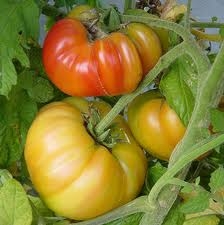
How much water a plant needs is driven by day length,temperature and wind. Plants lose water as long as they are photosynthesizing—in other words, as long as it is light out. The hotter and windier it is, the more water a plant needs.
Usually plants need the most water in early summer, at the end of June and beginning of July. A few weeks can make a big difference. Six weeks before that peak and six weeks afterward, your garden needs only about two-thirds as much water. By the end of September, plants need only about one-third the water that they did at the peak.
How much water your plants need also depends on how you use it. It can be scary to cut back when you've been successful with your watering regimen.To help you, here are some tips for conserving water in the vegetable garden and orchard:
Start with improving your soil because healthy soil holds more water. Amend with compost or other organic matter. Soil rich in organic material retains five times as much water as depleted soil does. So the healthy soil on my one-acre property holds an extra 100,000 gallons of water. Make sure your soil is thoroughly moist before you plant.
Mulch your garden. A generous layer of mulch will keep soil moisture from evaporating. As a bonus, organic mulches enhance soil fertility and water-holding capacity in future years and reduce the weeds that compete with your plants. Apply mulch to moist soil and make sure that irrigation water penetrates the mulch and reaches the underlying soil. Planting vegetables closer together will also help shade the soil and reduce moisture loss.
Water at the right time and in the right way.Use drip irrigation to apply water where it is needed, and irrigate when wind and temperatures are low to reduce evaporation. Early morning is best; evening is second best. Probe your soil for moisture. If it feels dry two inches down, it's time to water.
Get to know the signs that your vegetables are thirsty. Rather than a “set it and forget it” watering routine, look at your plants. Are the leaves getting dull? Is the plant a bit droopy? Then it's probably time to water. Squashes and pumpkins are an exception; they often look wilted in mid-afternoon. As long as they recover in the evening, they probably still have sufficient soil moisture.
Give new plants a good start. Apply adequate water early on and then taper off.As the plants mature,water less frequently but more deeply to encourage deep roots.
Avoid or minimize your plantings of the “thirsty” vegetables. Corn, soybeans, squashes, pumpkins, most watermelons and some cucumbers require a lot of water. If you can't live without them, look for varieties bred for drought tolerance and consider planting “bush” varieties if available. Plants with less foliage will use less water. Good vegetable choices include tomatoes and pole beans. Both yield over a long season without requiring large amounts of water.
Shade your vegetables during extreme heat with an umbrella, shade cloth or floating row cover. Remove the shading as soon as temperatures return to normal; summer vegetable plants prefer at least eight hours of sunlight per day.
In late summer, plant a cool-season garden. Even with below-normal rainfall, cool-season vegetables such as broccoli, cauliflower and greens require less water. In a wet year, you might not have to irrigate at all after the plants are established.
Finally, if water rationing means that you have to choose, let your annual vegetables go and water your fruit and landscape trees instead.
What's your best tip for saving water in your vegetable garden? Leave us a note on our Facebook page. And if you'd like to learn more about the physiological adaptions that plants make to water stress, take a look at this blog post on the Master Gardener website: //ucanr.edu/blogs/blogcore/postdetail.cfm?postnum=13978
Workshop: Napa County Master Gardeners will conduct a workshop on “Habitat Gardens at Home or School” on Saturday, May 16, from 9:30 a.m. to 11:30 a.m., at Skyline Park, Martha Walker Garden, 2201 Imola Avenue, Napa. Participants will tour the Martha Walker Garden to discover the plants and garden elements that attract bees, birds and pollinators. Master Gardeners will explain the value of habitat corridors whether the garden is in a rural, urban, or school setting. Online registration (credit card only) Mail-in registration (cash or check only)
Master Gardeners are volunteers who help the University of California reach the gardening public with home gardening information. Napa County Master Gardeners ( http://ucanr.org/ucmgnapa/) are available to answer gardening questions in person or by phone, Monday, Wednesday and Friday, 9 a.m. to Noon, at the U. C. Cooperative Extension office, 1710 Soscol Avenue, Suite 4, Napa, 707-253-4143, or from outside City of Napa toll-free at 877-279-3065. Or e-mail your garden questions by following the guidelines on our web site. Click on Napa, then on Have Garden Questions? Find us on Facebook under UC Master Gardeners of Napa County.